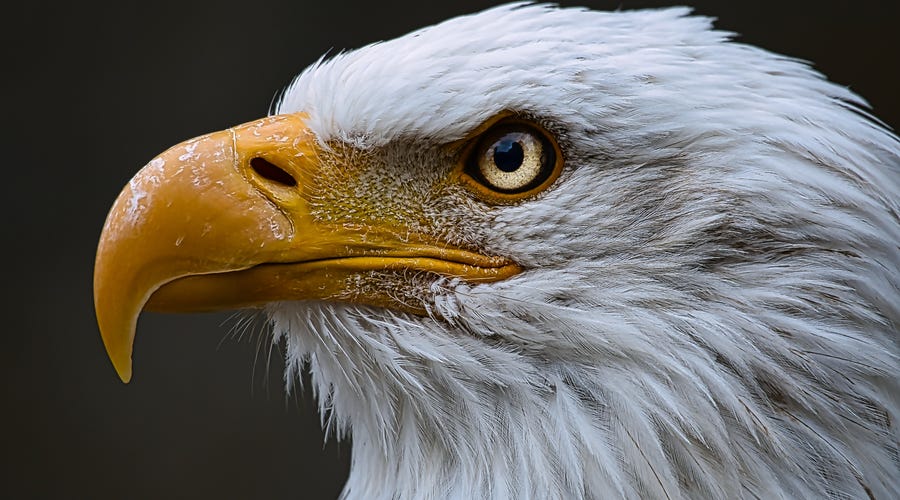
121 cute birds in English to earn a feather in your (vocabulary) cap
Author: Karolina Assi
Birds are a symbol of freedom. They have a mysterious beauty, recognized by artists and poets since the dawn of time. They are also important in our lives in many ways.
They bring us joy by singing beautifully outside of our windows and help maintain the ecosystem by eating small insects.
You probably already know the names of birds you frequently encounter in your life, such as duck or pigeon in English. But even if English is your native language, you might find it a challenge to name the birds you don’t see that often. That’s because learning the names of birds is not only a question of memorizing vocabulary - it’s also about learning what they look and sound like.
Although that sounds like a job for an ornithologist, being able to recognize a bird by its name can be extremely useful. It can help you tell your friends about that beautiful bird you saw on your recent trip to the Everglades National Park in the USA or the tropical one you saw in Costa Rica.
So, in this guide, we’ll cover over 110 names of birds in English. Ready?
How to say “bird” in English
In English, the word “bird” (pronounced bɝːd) originated from the Anglo Saxon word “bredan,” which meant “to breed.” This word then gave origins to the Middle English spelling of “bird,” which was “brid” or “byrd.” The word “bird” as we know it today was popularized during Shakespeare’s time.
Anyway, you probably don’t want to hear about the origins of the word “bird.” You’re here to learn the names of birds in English. Although you can probably name common birds like a hummingbird in English, there are many more to discover!
Very common birds in English
It’s estimated that there are over 18,000 different bird species around the world, divided into 252 different bird families. Needless to say, we won’t cover all 18,000 (we don’t even know that many ourselves!). We’ll focus on the most common and important types of birds that anyone should know.

| English | IPA pronunciation |
|---|---|
| Blackbird | / blækbərd / |
| Blue jay | / blu dʒeɪ / |
| Blue tit | / blu tɪt / |
| Canary | / kəneri / |
| Cardinal | / kɑrdɪnl̩ / |
| Chickadee | / tʃɪkədi / |
| Chicken | / tʃɪkən / |
| Crow | / kroʊ / |
| Cuckoo | / kəku / |
| Curlew | / kɝlju / |
| Dipper | / dɪpər / |
| Dove | / dəv / |
| Finch | / fɪntʃ / |
| Flycatcher | / flaɪkætʃər / |
| Goldcrest | / ɡoldkrest / |
| Great tit | / greɪt tɪt / |
| Hummingbird | / hʌmɪŋbərd / |
| Ibis | / aɪbəs / |
| Killdeer | / kɪldɪr / |
| Kingfisher | / kɪŋfɪʃər / |
| Kinglet | / kɪŋlɪt / |
| Long-tail tit | / lɒŋ teɪl tɪt / |
| Loon | / lun / |
| Magpie | / mægpaɪ / |
| Mockingbird | / mɑkɪŋbərd / |
| Nightingale | / naɪtɪŋɡel / |
| Nuthatch | / nʌθætʃ / |
| Partridge | / pɑrtrɪdʒ / |
| Passerine | / pæsʌrɪn / |
| Peacock | / pikɑk / |
| Pheasant | / fezənt / |
| Pigeon | / pɪdʒən / |
| Raven | / reɪvn̩ / |
| Robin | / rɑbən / |
| Sandpiper | / sændpaɪpər / |
| Seagull | / siɡəl / |
| Skylark | / skaɪlɑrk / |
| Songbird | / sɒŋbərd / |
| Sparrow | / spæroʊ / |
| Starling | / stɑrlɪŋ / |
| Swallow | / swɑloʊ / |
| Swift | / swɪft / |
| Thrasher | / θræʃər / |
| Woodpecker | / wʊdpekər / |
Migratory birds in English
Migratory birds are those that travel from one place to another. Most migratory birds travel in the winter to warmer places to avoid harsh weather conditions. Typically, they travel back home in spring or summer when the weather becomes favorable again. Some species are even able to migrate between hemispheres each year.
Here are the most common migratory birds in English.

| English | IPA pronunciation |
|---|---|
| Albatross | / ælbətrɑs / |
| Baer’s pochard | / baerz pəʊtʃəd / |
| Bulbul | / bʊlbʊl / |
| Calliope hummingbird | / kəlaɪəpi hʌmɪŋbərd / |
| Duck | / dək / |
| Eurasian wryneck | / jʊreɪʒn̩ raɪnek / |
| Godwit | / gɒd wɪt / |
| Goldfinch | / ɡoʊldfɪntʃ / |
| Goose | / ɡus / |
| Gull | / ɡəl / |
| Heron | / herən / |
| Mynah | / maɪnə / |
| Northern wheatear | / nɔrðərn hwit ɪr / |
| Orange-bellied parrot | / ɔrəndʒ belid perət / |
| Puffin | / pʌfɪn / |
| Snowy owl | / snoʊɪ aʊl / |
| Stork | / stɔrk / |
| Teal | / til / |
| Tern | / tɝn / |
| Warbler | / wɔrblər / |
| Whooping crane | / hupɪŋ kreɪn / |
| Wren | / ren / |
Birds of prey in English
When we say “birds of prey”, we’re not talking about the Harley Quinn movie. We’re talking about the most dangerous bird species out there. The hunters. The meat-eaters. The ones you don’t want to come too close to!

| English | IPA pronunciation |
|---|---|
| Buzzard | / bʌzərd / |
| Caracara | / kɑrəkɑrə / |
| Condor | / kɑndər / |
| Eagle | / iɡl̩ / |
| Falcon | / fælkən / |
| Harrier | / heriər / |
| Hawk | / hɒk / |
| Heron | / herən / |
| Kite | / kaɪt / |
| Osprey (fish hawk or river hawk) | / ɒspri fɪʃ hɔk ɔr rɪvər hɒk / |
| Owl | / aʊl / |
| Vulture | / vʌltʃər / |
Wild and exotic birds in English
If you’re looking for an explosion of colors, look no more! These exotic birds will wow anyone with their unique combination of beautifully colored feathers.

Here’s a list of the most popular tropical, exotic birds in English. We’ve also thrown in a few wild birds that aren’t so colorful, but equally unique.
| English | IPA pronunciation |
|---|---|
| Aracari | / arakari / |
| Bali bird-of-paradise | / bɑli bɜd əv perədaɪs / |
| Bee-eater | / bi-itər / |
| Budgie | / bʌdʒi / |
| Chipping sparrow | / tʃɪpɪŋ spæroʊ / |
| Cockatiel | / kɒk.əˈtil / |
| Cockatoo | / kɑkətu / |
| Cormorant | / kɔrmərənt / |
| Flamingo | / fləmɪŋɡoʊ / |
| Flicker | / flɪkər / |
| Greater bird-of-paradise | / ɡreɪtər bɜd əv perədaɪs / |
| Hoatzin | / hoatzin / |
| Honeycreeper | / hʌni kripər / |
| Hoopoe | / hupu / |
| Hornbill | / hɔrnbɪl / |
| Horned sungem | / hɔrnd sʌndʒem / |
| Jacana | / dʒæˈkɑːnə / |
| Kagu | / kagu / |
| Lapwing | / læpwɪŋ / |
| Lorikeet | / lɔrəkit / |
| Lovebird | / lʌvbɝd / |
| Macaw | / məkɒ / |
| Parakeet | / perəkit / |
| Parrot | / perət / |
| Peacock | / pikɑk / |
| Peafowl | / pifɑwl / |
| Potoo | / poʊtu / |
| Quetzal | / ketsɑl / |
| Redshank | / redʃæŋk / |
| Rosella parrot | / rozelə perət / |
| Titmouse | / tɪtmaʊs / |
| Toucan | / tukən / |
| Wilson’s bird-of-paradise | / wɪlsənz bɜd əv perədaɪs / |
Flightless birds in English
Birds are identified as a species by their feathers, beak, wings, and their ability to fly. But not all birds can fly. One of those flightless birds you may remember from biology classes is the penguin.
Here are a few more birds that can’t fly.

| English | IPA pronunciation |
|---|---|
| Cassowary | / kæsəweri / |
| Emu | / imju / |
| Kakapo | / kɑkɑpoʊ / |
| Kiwi | / kiwi / |
| Ostrich | / ɒstrɪtʃ / |
| Penguin | / peŋɡwən / |
| Rhea | / riə / |
| Takahe | / təkɑhi / |
| Turkey | / tɝki / |
| Weka | / wikɑ / |
Bird songs in English
The Birds Train Song
This song is a perfect way to learn different birds in English! Although it’s a song for babies, it’s also great for English learners. It’ll help you not only remember the names of birds but also learn what each of these birds looks like.
Three Little Birds by Bob Marley
This is a fun and upbeat song about three little birds in the iconic style of the legendary Bob Marley. It will have you smiling while you listen to it!
I’m Like a Bird by Nelly Furtado
Birds symbolize freedom, and that’s what this song by Nelly Furtado talks about.
Hawkward bird puns that will have you quacking up
Yes, these bird puns may be a little corny. But you have to admit that they’re also quite emu-sing! Plus, they’re an owlsome way to memorize the names of a few birds and bird-related vocabulary!
- Owl by myself
- Owl never give up
- It’s owl, or nothing
- Toucan do it!
- Toucan play this game
- Impeckable
- That’s owlsome
- You’re dove-ly
- I’m so emu-tional
- I have no egrets
- So eggs-sighting
- Winner winner, chicken dinner
- I’m feeling under the feather
- That took a tern!
- This is very unpheasant
Birds speaking English
You’ve probably seen some videos on the internet of parrots speaking like humans. Yes, it’s been proven that parrots and songbirds are two bird species that can mimic their owner’s voice and learn human speech.
Below are some of the funniest videos we found of birds speaking English!
- A compilation of 10 hilarious talking birds
- Einstein the Parrot imitates animal sounds
- Top 16 funniest talking birds
It’s time to fly away
We’ve covered a lot of birds in this guide, and we’ve got no egrets! Some of these 110 birds will come in handy when you travel to an English speaking country, see these feathery animals in their habitats, or have a conversation about funny birds speaking English with a friend.
If you enjoyed this article, don’t stop the fun! Find more free English vocabulary lessons on our learn English blog.


